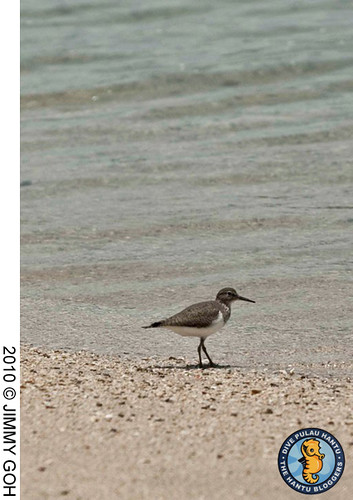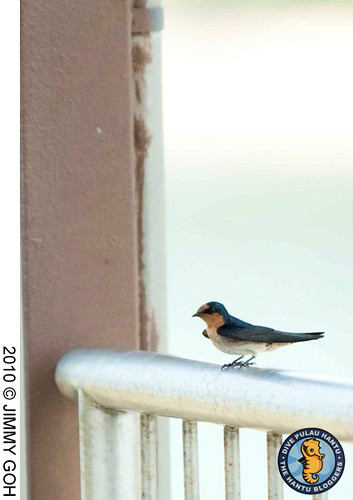Birds of Pulau Hantu
 April 2, 2010
April 2, 2010


I was told by a former resident of Hantu Island, that it got its name, which translates as “Ghost Island” in Malay, from of the calls of fishing owls that used to reside in the island’s mangrove trees several decades ago, before the island was manicured to its present state. The Malay name for owls being Burung hantu, meaning “Ghost bird”.
We didn’t see any owls on the island last Sunday, but Volunteer reef guide Jimmy Goh, took a stroll on the island and took a few shots of the above birds.
Left: Common Sandpiper Actitis hypoleucos; Kedidi Pasir (Malay)
Common Sandpipers are abundant but typically feed alone or in pairs, avoiding areas where other more gregarious species feed.
Breeding (April-July): Common Sandpipers breed in northern Eurasia from the Atlantic across the continent to Central Japan. They usually arrive at their breeding grounds in pairs. They prefer to nest near water, but sometimes in trees or shrubs. The male does most of the incubation and rearing.
Migration: Common Sandpipers migrate in small groups (rarely more than 200) or alone. They migrate well north, across much of the Old World including Australia, although few reach New Zealand. They are likely to be among the most numerous visiting waders in Singapore.
Right: Pacific Swallow Hirundo tahitica; Layang Layang Pasifik (Malay)
Pacific Swallows eat insects, catching them during flight. Unlike Swifts that simply trawl the air with their mouths open, Swallows don’t hunt on the wing. They perch and wait, then actually chase after individual prey and perform aerial acrobatics to catch them. Swallows also hunt at lower levels than Swifts.
Pacific Swallows are found everywhere, but usually near water and open country. In Singapore, they are particularly common along the coasts, and also found in mangroves.
 Posted in
Posted in 



 content rss
content rss
COMMENTS